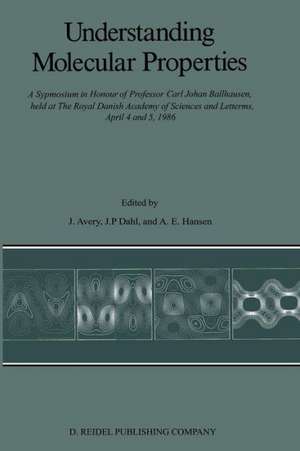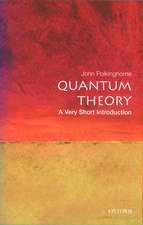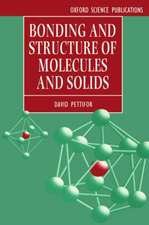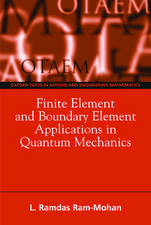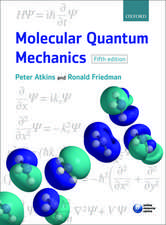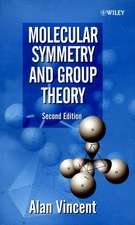Understanding Molecular Properties: A Symposium in Honour of Professor Carl Johan Ballhausen, held at The Royal Danish Academy of Sciences and Letters, April 4 and 5, 1986
Editat de John S. Avery, Jens Peder Dahl, Paul R. Hansenen Limba Engleză Paperback – 14 dec 2011
| Toate formatele și edițiile | Preț | Express |
|---|---|---|
| Paperback (1) | 1231.64 lei 6-8 săpt. | |
| SPRINGER NETHERLANDS – 14 dec 2011 | 1231.64 lei 6-8 săpt. | |
| Hardback (1) | 1238.86 lei 6-8 săpt. | |
| SPRINGER NETHERLANDS – 31 ian 1987 | 1238.86 lei 6-8 săpt. |
Preț: 1231.64 lei
Preț vechi: 1501.99 lei
-18% Nou
Puncte Express: 1847
Preț estimativ în valută:
235.68€ • 252.02$ • 196.50£
235.68€ • 252.02$ • 196.50£
Carte tipărită la comandă
Livrare economică 18 aprilie-02 mai
Preluare comenzi: 021 569.72.76
Specificații
ISBN-13: 9789401081825
ISBN-10: 9401081824
Pagini: 612
Ilustrații: X, 598 p.
Dimensiuni: 155 x 235 x 32 mm
Greutate: 0.84 kg
Ediția:Softcover reprint of the original 1st ed. 1987
Editura: SPRINGER NETHERLANDS
Colecția Springer
Locul publicării:Dordrecht, Netherlands
ISBN-10: 9401081824
Pagini: 612
Ilustrații: X, 598 p.
Dimensiuni: 155 x 235 x 32 mm
Greutate: 0.84 kg
Ediția:Softcover reprint of the original 1st ed. 1987
Editura: SPRINGER NETHERLANDS
Colecția Springer
Locul publicării:Dordrecht, Netherlands
Public țintă
ResearchCuprins
I. Electronic Structure of Transition Metal Complexes.- Electronic Spectroscopy of Metal-Metal ?-Symmetry Interactions.- Metal Metal Bonds in Edge Sharing Bioctahedra.- Recent Developments in Inorganic Spectroscopy.- Exchange Effects in Polynuclear Chromium (III) Complexes.- Jahn-Teller Distortion of the 4T1 (G) State of MnCl42- in Cs3MnCl5.- Ab Initio Calculation of Electronic Transitions in Transition Metal Complexes.- The Cellular Ligand-Field Model.- The Orthonormal Operator Formulation of Symmetry-Based Ligand Fields, Rhombohedral Hierarchies as a General Example.- High and Low-Spin Interconversion in a Series of Tris (pyridylmethylamine)iron(II) Complexes.- Tetracyanobiimidazole: a Polyploid of Distinction.- The Intensities of Vibronic Origins in Transition Metal Complex Ions.- II. Reaction Rates.- Photon Echoes in Multilevel Systems.- Solvent Dynamical and Symmetrized Potential Aspects of Electron Transfer Rates.- A Theoretical Approach to Chemical Reactions at Solid Surfaces.- Electron Beams in Surface Analysis.- III. Spectroscopy.- The Spectral Properties of Molecular Propellers, With Applications to Werner-Type Complexes.- Insights into Hemoglobin Dynamics from Resonance Raman Spectroscopy.- Spin Uncoupling in the 6s Rydberg States of Methyl Iodide: The Rotational Sub-Band Structure of the One- and Two-Photon Absorption.- Spectroscopy as a Probe of Intermolecular Interactions.- Solvent, Temperature, and Band Asymmetry Features of Optical Charge Transfer Transitions in Solute Molecules in Liquids and Glasses.- The Theory of Vibrational Optical Activity.- Understanding Molecular Optical Activity.- Optical Activity (CD and CPL) as a Probe of Ion Pairing and Solution Structure of Macrocycle Complexes.- Optical Properties of Large Molecules in the Frenkel ExcitonApproximation.- Two-Photon Spectroscopy of Lanthanide (III) Complexes.- Experimental Research in the Optical Laboratory of Chemical Laboratory IV, H.C. Ørsted Institute.- IV. Floppy Molecules and the Liquid State.- Molecules: Rigid/Floppy or Solid/Liquid?.- Understanding Floppy Molecules.- Stability and Conformation of Silicon-Carbon Compounds. A Case Study of SiC2, Si2C and Si3.- Water and Aqueous Solutions.- The Effect of Structure and Solvation on the Thermodynamic Parameters for the Formation of Singly and Doubly Charged Ions of Organic Compounds in Solution.- V. Computational Quantum Chemistry.- The Energies of 3-Electron Atomic Systems Calculated by Hylleraas Type Wave Functions.- Hartree-Fock Pathology and Large Molecules.- On the Relation Between Relativity and Periodic Trends Within a Triad of Transition Metals.- A Symmetric Group Approach to the Calculation of Electronic Correlation Effects in Molecules.- Transverse Susceptibility of Spin-S Ising Chains in the Presence of a Crystal Field.- Chemical Bonds and Electronic States of Transition Metal— Containing Diatomic.
